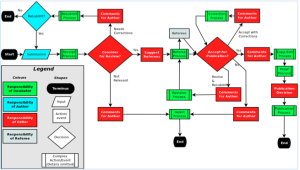Lean production considers product and process design as an ongoing activity and not a one-off task, and should be viewed as a long-term strategy.
The role of the workforce in lean production is paramount, relying on their wisdom and experience to improve the process, reducing waste, cost and production time. Recognizing this results in motivated workforces whose interests are in the success of the product.
Characteristics of lean production
Lean production considers product and process design as an ongoing activity and not a one-off task. It should be viewed as a long-term strategy that focuses on continual feedback and incremental improvement.
The characteristics of lean production include:
- JIT supplies/system
- a highly trained, multi-skilled workforce
- quality control and continuous improvement
- zero defects
- zero inventory
Ten Principles of lean production
There are several key principles of lean production. If any of these principles are not met this could result in failure or a lack of commitment. Without commitment the process becomes ineffective.
- Elimination of waste from various areas (JIT) and do it well from the beginning.
- Minimizing inventory
- Maximizing production flow and designing for rapid production changeover
- Kaizan – Continuous Improvement from everyone – from management to workers. Without continuous improvement your progress will cease.
- Respect for workers or empowering workers (Humans, most reliable and valuable resource to any company)
- Pulling production from customer demand or meeting customer requirements
- Designing for rapid changeover
- Creating a reliable partnership with suppliers
- Meeting customer requirements
- Doing it right the first time
Advantages and disadvantages to lean production
Advantages
- Increase consumer satisfaction due to cost reduction
- Productivity has increased because of focus improvements and reduction in waste
- Quality of product improvement and continuos improvement
- Waste reduction
- Reduced impact on the environment
- Adapt to market pull
- Increase in profits
- Improved work conditions for employees
- Competitive advantage
Disadvantages
- Change in worker and management attitude can be difficult to manage or to gain complete buy in
- Delivery times – since no inventory is held in storage and breakdown in the system will cause delays
- Supply problems
- High initial capital costs
Value Stream Mapping & Workflow Analysis
Value stream mapping is a lean production management tool used to analyse current and future processes for the production of a product through to delivery to the consumer.
- helps to identify Value and Waste in production
Workflow analysis is the review of processes in a workflow,
- for example, a production line,
- in order to identify potential improvements.
Value stream mapping and workflow analysis contribute to the design of an effective lean production method through:
- Value stream mapping provides the big picture of the manufacturing process
- Where as workflow analysis is concerned with the production lines
This image shows a workflow analysis by using a flow chart through certain questions and criterions.
Product family
- A group of products having common classification criteria.
- Members of a product family have many common parts and assemblies and production processes.
- Investopedia on Product Family
- Advantages include:
- Cost-effective due to – reduced manufacturing costs, similar manufacturing techniques, similar supply chain, reduced R&D,
- Allows companies to attract new customers to their brand though an array of products that are similar but meet slightly different needs.
- Customers as they can rely on their positive experience with an existing brand.
- Adapt easily to market demand such as the iPhone 5SE (shows and example of market pull)
Role of the workforce
- Training
- The development of a highly skilled workforce can build deep understanding of how the production process works and allow workers at all levels to identify areas of the workflow to be improved.
- This leads to the devolution of power
- Devolution in power relating to process improvement
- Understanding that the best people to identify improvements of a product or system are those who use it, companies striving for a lean production system ensure that all members of the workforce are able to contribute to the design of the system.
- This benefits the company, which is able to streamline processes and reduce costs and also empowers the workforce and gives them a sense of ownership and loyalty to the company.
- Kaizen
- A philosophy and commitment to continuous process and product improvement
- It is considered an important aspect of an organization’s long-term strategy.
- This has been central to the success of many Japanese companies such as Toyota.
- It originated in Japan
Lead time
- Lead time refers to the time quoted to customers (usually in days or weeks) between the date of purchase and the date of delivery.
- It is basically the time frame it takes from the order of a product to its manufacture until it is delivery to the customer. This can be days or weeks in duration. This includes the production, set-up etc times.
- The business dictionary has a bit more
The 5 Ss:
- Sorting
- Stabilizing
- Shining
- Standardizing
- Sustaining the practice
Theory of Knowledge
The importance of the individual is recognized in design processes. Is this the case in other areas of knowledge?
International mindedness
The implementation of lean production has benefits for the global environment.




